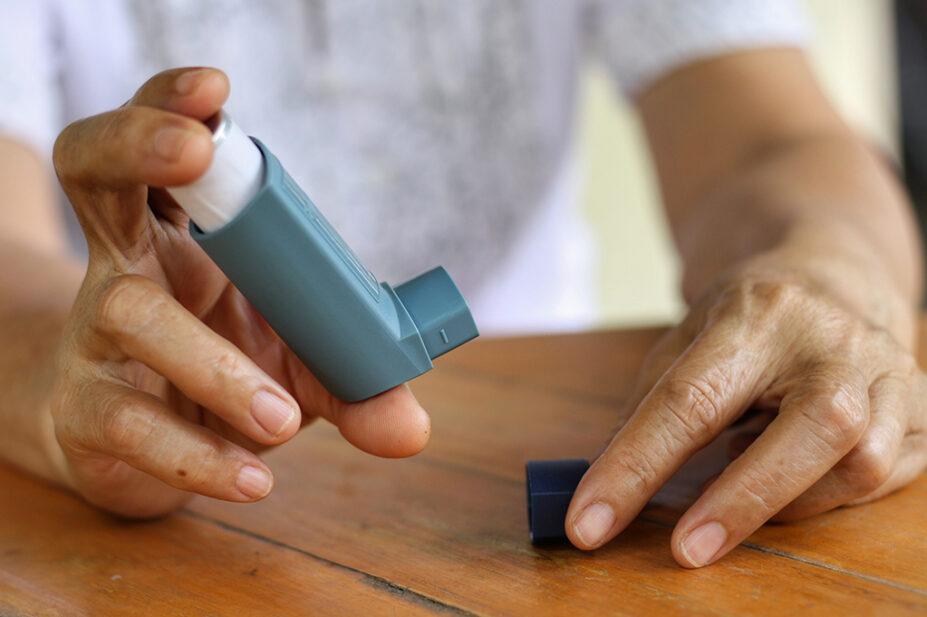
Shutterstock.com
A reformulated “greener” inhaler for asthma and COPD, which uses a more environmentally-friendly propellant gas, is therapeutically equivalent to traditional inhalers that are being phased out over concerns over their impact on the climate, a pharmaceutical company has reported.
Three studies, funded by manufacturer Chiesi, compared combined inhalers that use 1,1-difluoroethane (HFA-152a) as a propellant — which have a lower global warming potential than traditional inhalers — with devices that use HFA-134a as a propellant — which is commonly used in metered dose inhalers (MDIs).
The inhalers were tested in 212 healthy adult participants across three randomised crossover studies carried out in Belgium, looking at lung availability and total systemic exposure of the active ingredients. Two of the studies were carried out without a spacer (n=141) and one with a spacer (n=71).
The authors explained that looking at total systemic exposure is a marker of safety and testing lung availability demonstrates the efficacy of the inhaler.
Although some variation was found between studies, the authors reported overall “bioequivalence” for the two propellants and that the formulations were both well tolerated by patients.
The data support the reformulation of the devices as a way to help reduce the carbon footprint of inhalers, they concluded.
Studies have shown that the carbon footprint of HFA-152a inhalers is reduced by more than 90% compared with those containing HFA-134a.
According to Chiesi’s research, published in Pulmonary Pharmacology & Therapeutics in June 2024, switching of inhaler propellants is complex because the active ingredient is contained in the device’s solution or suspension and has an impact on the whole inhaler formulation.
Chiesi said its research was in addition to two short-term clinical trials assessing the safety of HFA-152a and similar studies conducted with a fixed inhaled corticosteroid (ICS)/long-acting bronchodilator (LABA) combination.
A spokesperson for the manufacturer confirmed to The Pharmaceutical Journal that the company’s goal was to replace propellants with HFA-152a in all their pressurised MDIs.
They also said that a phase III study was underway evaluating the longer-term clinical safety of products containing the greener propellant across five UK trial sites in Manchester, Portsmouth, Bradford and London.
The ‘NHS Net Zero Strategy’, published in October 2020, said that patients should be switched to dry powder inhalers (DPIs) where appropriate, owing to the greenhouse gas effects of commonly-used MDI gases.
However, guidance from the Scottish government warned in September 2023 against “blanket switching” to DPIs because they are not always the best option for patients.
Other companies are investing in research and technology to cut the carbon footprint of pressurised MDIs.
Commenting on the study, Andy Whittamore, clinical lead at Asthma + Lung UK, said: “This is really important news for people with lung conditions who need or prefer MDIs.
“In recent years, there has been a push by the NHS for people to change their inhalers to more environmentally-friendly alternatives. This was mainly by changing from MDIs, which contain potent greenhouses gases that contribute to climate change, to dry powder inhalers (DPIs).
“The most important thing people with asthma and chronic obstructive pulmonary disease (COPD) can do to minimise impact on the environment is to use their inhalers with the right technique and as they have been prescribed to help control their condition. In some cases, someone with asthma or COPD will require an MDI to prevent and treat their symptoms and will not be able to use a DPI.”
He added that the study showed “MDI use need not be as bad for the environment as it was before”.
Anna Murphy, consultant respiratory pharmacist at University Hospitals of Leicester NHS Trust, said: “Prescribers will need options — dry powder and aerosol type — as it depends on your patient, and it’s a shared decision to get to a device that the patient can and will use.”
Ralph Blom, general manager of Chiesi UK and Ireland, said: “These study findings represent a vital milestone in our goal to deliver environmentally-conscious solutions for people with asthma and COPD and deliver on our ambitious commitment to become net zero by 2035.
“We firmly believe patients shouldn’t have to choose between their health and the health of the planet, which is why we’re striving to maintain choice for patients by delivering carbon minimal alternatives to the therapies they are prescribed.”


